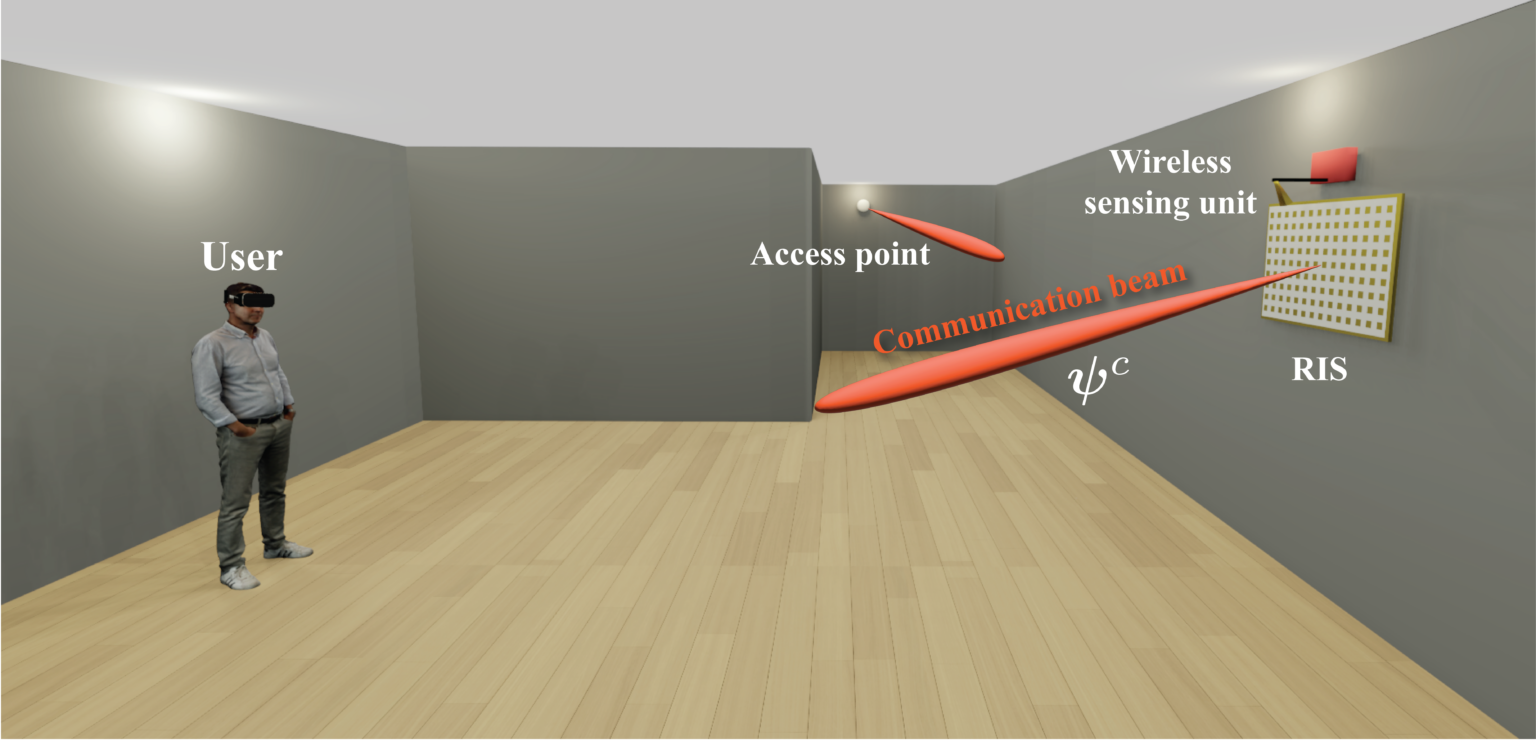Integrated Imaging and Communication with
Reconfigurable Intelligent Surfaces
Accepted to the Asilomar Conference on Signals, Systems, and Computers, 2023
Hao Luo and Ahmed Alkhateeb
Wireless Intelligence Lab, ASU


This figure shows the integrated imaging and communication system. In the imaging/sensing stage, the wireless sensing unit transmits the sensing signals to the RIS via a feeding antenna. The sensing signals are reflected towards the environment by the RIS, which then reflects the backscattered/reflected signals back to the wireless sensing unit. The received signals are processed by the wireless sensing unit to construct a depth map of the environment, which enables the system to design the RIS interaction vector for communication.
Abstract
Reconfigurable intelligent surfaces, with their large number of antennas, offer an interesting opportunity for high spatial-resolution imaging. In this paper, we propose a novel RIS-aided integrated imaging and communication system that can reduce the RIS beam training overhead for communication by leveraging the imaging of the surrounding environment. In particular, using the RIS as a wireless imaging device, our system constructs the scene depth map of the environment, including the mobile user. Then, we develop a user detection algorithm that subtracts the background and extracts the mobile user attributes from the depth map. These attributes are then utilized to design the RIS interaction vector and the beam selection strategy with low overhead. Simulation results show that the proposed approach can achieve comparable beamforming gain to the optimal/exhaustive beam selection solution while requiring 1000 times less beam training overhead.
Proposed Solution

This figure presents the operation flow of the proposed image-aided communication solution. To begin, the estimated depth map undergoes background subtraction, followed by the elimination of undesired reflections and sensing noise. The pixel coordinates and the corresponding angles of the user can then be obtained from the processed depth map. Finally, the beam selection strategy is performed based on the estimated angles of the user.
Video Presentation

Reproducing the Results

Citation
H. Luo and A. Alkhateeb, “Integrated Imaging and Communication with Reconfigurable Intelligent Surfaces,” 2023 57th Asilomar Conference on Signals, Systems, and Computers, Pacific Grove, CA, USA, 2023, pp. 151-156, doi: 10.1109/IEEECONF59524.2023.10476888.
@INPROCEEDINGS{Luo2023,
author={Luo, Hao and Alkhateeb, Ahmed}, booktitle={2023 57th Asilomar Conference on Signals, Systems, and Computers},
title={Integrated Imaging and Communication with Reconfigurable Intelligent Surfaces},
year={2023},
volume={},
number={},
pages={151-156},
doi={10.1109/IEEECONF59524.2023.10476888}}

